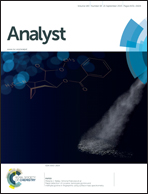Dielectric spectroscopy for monitoring human pancreatic islet differentiation within cell-seeded scaffolds in a perfusion bioreactor system
Abstract
The long-term in vitro culture and differentiation of human pancreatic islets is still hindered by the inability to emulate a suitable microenvironment mimicking physiological extracellular matrix (ECM) support and nutrient/oxygen perfusion. This is further amplified by the current lack of a non-invasive and rapid monitoring system to readily evaluate cellular processes. In this study, we realized a viable method for non-invasively monitoring isolated human pancreatic islets in vitro. Islets are induced to dedifferentiate into proliferative duct-like structures (DLS) in preparation for potential and subsequent re-differentiation into functional islet-like structures (ILS) in a process reminiscent of islet regeneration strategies. This long-term in vitro process is conducted within a three-dimensional microenvironment involving islets embedded in an optimized ECM gel supported by microfabricated three-dimensional scaffolds. The islet-scaffold is then housed and continuously perfused within chambers of a bioreactor platform. The process in its entirety is monitored through dielectric spectroscopy measurements, yielding an accurate representation of cellular morphology, functionality, and volume fraction. This non-invasive and real-time monitoring tool can be further manipulated to elucidate important information about the optimized cellular microenvironment required for maintaining long-term culture and achieve efficient differentiation for islet regeneration.


 Please wait while we load your content...
Please wait while we load your content...